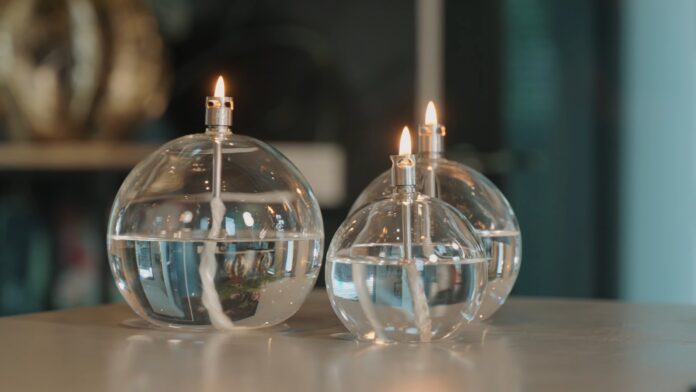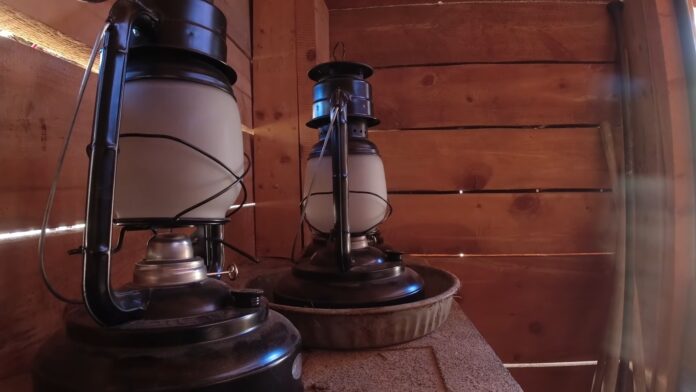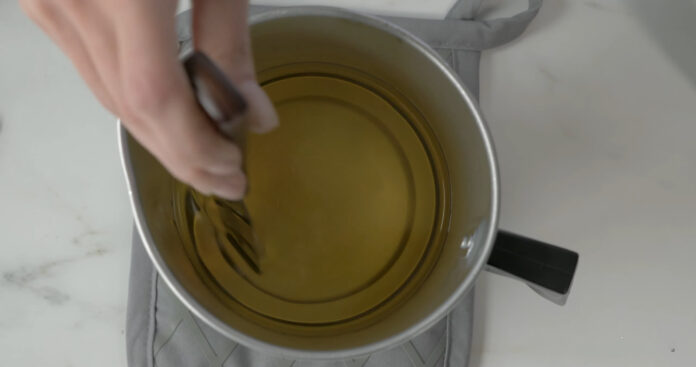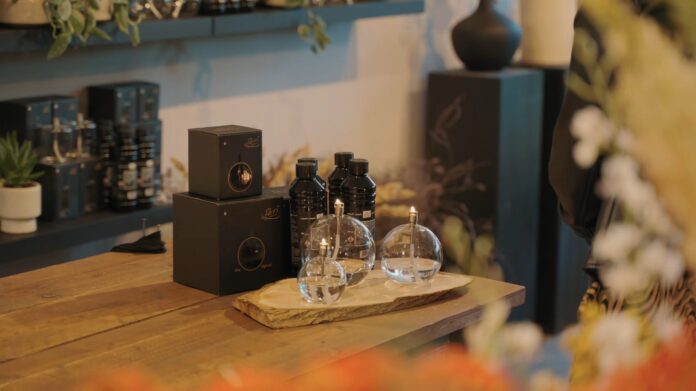Let’s talk about something we’ve all encountered – that moment when you realize you’ve got a bottle of leftover lamp oil sitting around, and you’re not quite sure what to do with it.
I’ve been there, staring at that half-used container and wondering if there’s a better way to bid it farewell than just tossing it in the trash. Well, guess what? There totally is!
In today’s chat, I want to share with you my personal experience and discovery. Trust me,
I’m no expert, but I’ve been on a quest to find a smarter and more responsible way to deal with this stuff.
Methods of Disposal
I did my research and found a few tested methods that ensure both safety and environmental protection. These methods proved to be very efficient.
Local Hazardous Waste Collection

Many municipalities offer hazardous waste collection days or facilities where residents can drop off items like used lamp oil.
These centers have the necessary equipment and knowledge to handle and process hazardous waste properly.
It’s advisable to keep the fluid in its original container or a clearly labeled one when taking it to these collection points.
This helps workers quickly identify the contents and handle them accordingly.
Recycling Centers
Some specialized recycling centers accept lamp oil. They have methods to treat or repurpose the fluid, ensuring it doesn’t end up in landfills or water sources.
Before heading to a recycling center, always call ahead to confirm they accept this kind of waste and understand their guidelines for drop-off.
Remember, the goal is to minimize harm while maximizing safety.
Avoid Pouring Down the Drain

One might assume that pouring small amounts of oil down the drain is harmless. However, doing so can have significant consequences, both for plumbing and the environment.
Plumbing Concerns
Pouring the fluid down the drain can lead to plumbing issues. It can solidify and clog pipes, especially when combined with other debris.
This can lead to expensive plumbing repairs and might even cause sewer backups in severe cases.
Additionally, wastewater treatment plants aren’t equipped to remove all oil contaminants.
When oil bypasses the treatment process, it ends up in our natural water systems, causing significant environmental harm.
Water System Contamination
As mentioned, untreated lamp oil can end up in rivers, lakes, and oceans, posing severe threats to marine life.
Even small amounts of fluid can coat fish gills, suffocating them or making it harder for them to breathe.
Oil in waterways can also contaminate drinking water sources, leading to health risks for communities that rely on these sources.
Alternative Uses for Leftover Oil
Before you consider disposal, think about potential reuse. Lamp oil, if uncontaminated, can serve other purposes, extending its utility and reducing waste.
Refill Other Lamps
The most straightforward solution is to use leftover fluid to refill other lamps. If you have multiple lanterns or lamps, consolidate the remaining oil into one container.
It not only reduces the amount you’ll need to dispose of but also ensures you get the most out of your purchase.
DIY Projects
Craft enthusiasts often find creative ways to use this fluid in DIY projects.
From creating homemade candles to outdoor torches for garden parties, there are myriad ways you can utilize excess lamp oil, turning it into functional or decorative items.
Precautions For Transporting the Oil for Disposal
When taking the oil to a disposal facility or recycling center, safe transportation is essential.
The last thing you’d want is a spill in your vehicle or on the way (it happened – not so easy to clean).
Use the Right Container
Always transport the oil in its original container or a sturdy, leak-proof one.
Ensure the container is sealed tightly, and if possible, place it in a secondary bag or box to contain potential leaks.
Keep It Away from Ignition Sources
Lamp oil is flammable. When transporting, ensure it’s kept away from any sources of ignition.
This includes lit cigarettes, open flames, or even electrical equipment that might produce a spark.
Safety extends to where you place the container in your vehicle. Ideally, the trunk or back of the vehicle, away from passengers, is best.
Safety Precautions
Handling this oil safely minimizes potential hazards. By taking a few precautionary steps, you can ensure the safety of both yourself and the environment.
Storing Lamp Oil
Before even thinking of disposal, it’s crucial to store the oil safely. Keep it in a cool, dry place, away from direct sunlight or sources of ignition.
Always use an original container with a tight-fitting cap. This not only prevents accidental spills but also ensures the oil doesn’t degrade due to exposure to moisture or air.
Children and pets are naturally curious, so ensure they cannot access the storage area. Accidental ingestion or skin exposure can be harmful, so it’s better to be safe than sorry.
Handling Spills
Accidents happen. If you spill the oil, act quickly. For small spills, absorb the oil using cat litter, sand, or commercial absorbents.
Once fully absorbed, place the used material in a sealed bag or container. Remember, this too needs proper disposal.
For larger spills, contain the area to prevent the fluid from spreading, especially towards drains or water sources.
Seek professional help if the spill is substantial or if it threatens water sources.
Educate and Share
Once you know how to dispose of lamp oil correctly, it’s beneficial to spread the word (just like me at this moment).
Sharing this information can amplify the positive environmental impact.
Engage in Community Programs
Join or start community initiatives that educate about the safe disposal of hazardous household items.
Workshops, seminars, or even small neighborhood gatherings can make a difference.
Use Social Media
In our digital age, a tweet or post can reach hundreds, if not thousands. Share your knowledge about safe disposal on social platforms.
The ripple effect of such actions can be immense, leading to a broader community impact.
By taking the time to learn and then share about this topic, you contribute to both individual and community safety and environmental conservation.
Embrace the responsibility, and enjoy the benefits of a safer, cleaner world.
Consider Alternatives to Lamp Oil

In a world that’s increasingly environmentally-conscious, it might be worth considering alternatives to traditional lamp oil.
Such alternatives can reduce the need for disposal altogether.
Soy-based Oils
Soy-based oils are natural alternatives to petroleum-based oils. They burn cleanly, produce minimal soot, and are biodegradable, making them a more environmentally friendly option.
Though slightly more expensive, their ecological benefits might make them worth the extra cost.
Electric and Solar Lamps
Modern technology offers alternatives that entirely sidestep the need for lamp oil. Electric and solar lamps can replicate the warm glow of traditional lamps without the need for oil.
These solutions are particularly suitable for regular users, reducing both cost and environmental impact over time.
Legal Implications of Improper Disposal
While many individuals might not be aware, improper disposal of lamp oil can have legal repercussions in certain jurisdictions, emphasizing the need for responsible handling.
Fines and Penalties
Depending on local regulations, improper disposal, especially if it results in environmental contamination, can lead to fines and penalties.
Municipalities are becoming stricter in their enforcement of environmental protection rules, so it’s always best to err on the side of caution.
Reporting Spills
In many places, if a significant spill occurs – especially if it threatens waterways – it’s a legal requirement to report it to local authorities.
Such reports allow for timely interventions, minimizing potential harm. Knowing your local regulations and abiding by them protects both the environment and yourself.
FAQs:
Is it safe to store lamp oil in plastic containers?
It’s recommended to use a metallic container with a tight lid for safety.
Can it be mixed with other fuels for disposal?
No, never mix lamp oil with any other kind of fuel.
Why is this fluid considered nonrenewable yet has an infinite shelf life?
While it’s sourced from nonrenewable resources, if stored properly, it doesn’t expire.
What can you do if no disposal option is available?
Reuse the oil and burn it off completely.
How can you burn off leftover fluid?
Pour it into a flat metallic pan and dip cotton balls in it to create a mini bonfire.
Final Thoughts
By making informed choices about disposing of lamp oil, we’re not only looking out for our own safety but also taking a step towards preserving the beauty and health of our shared planet.
So, the next time you light up that lantern or think about discarding old oil, remember: that a little knowledge and care can go a long way.
Let’s keep our world bright and clean, one responsible action at a time.




